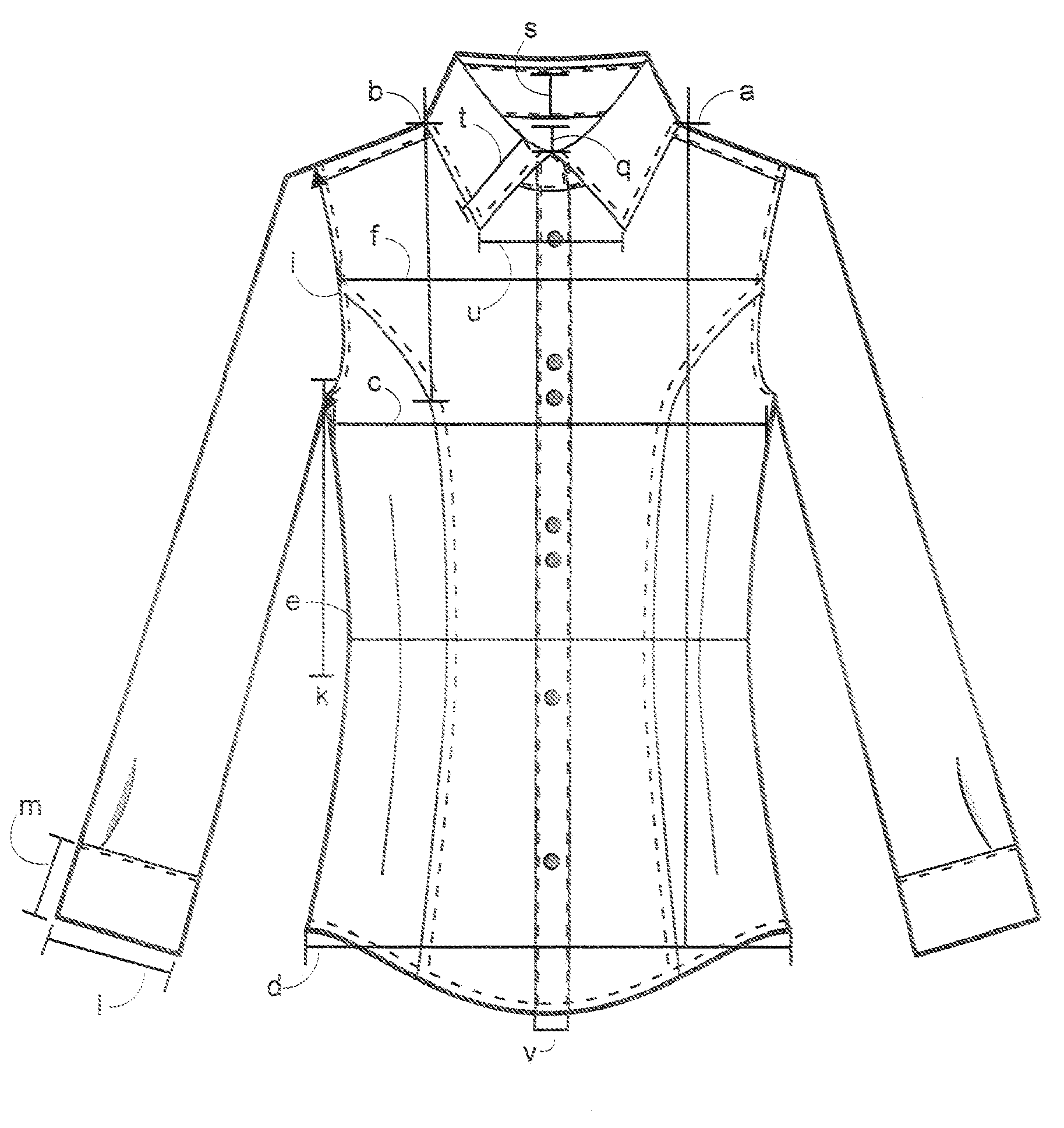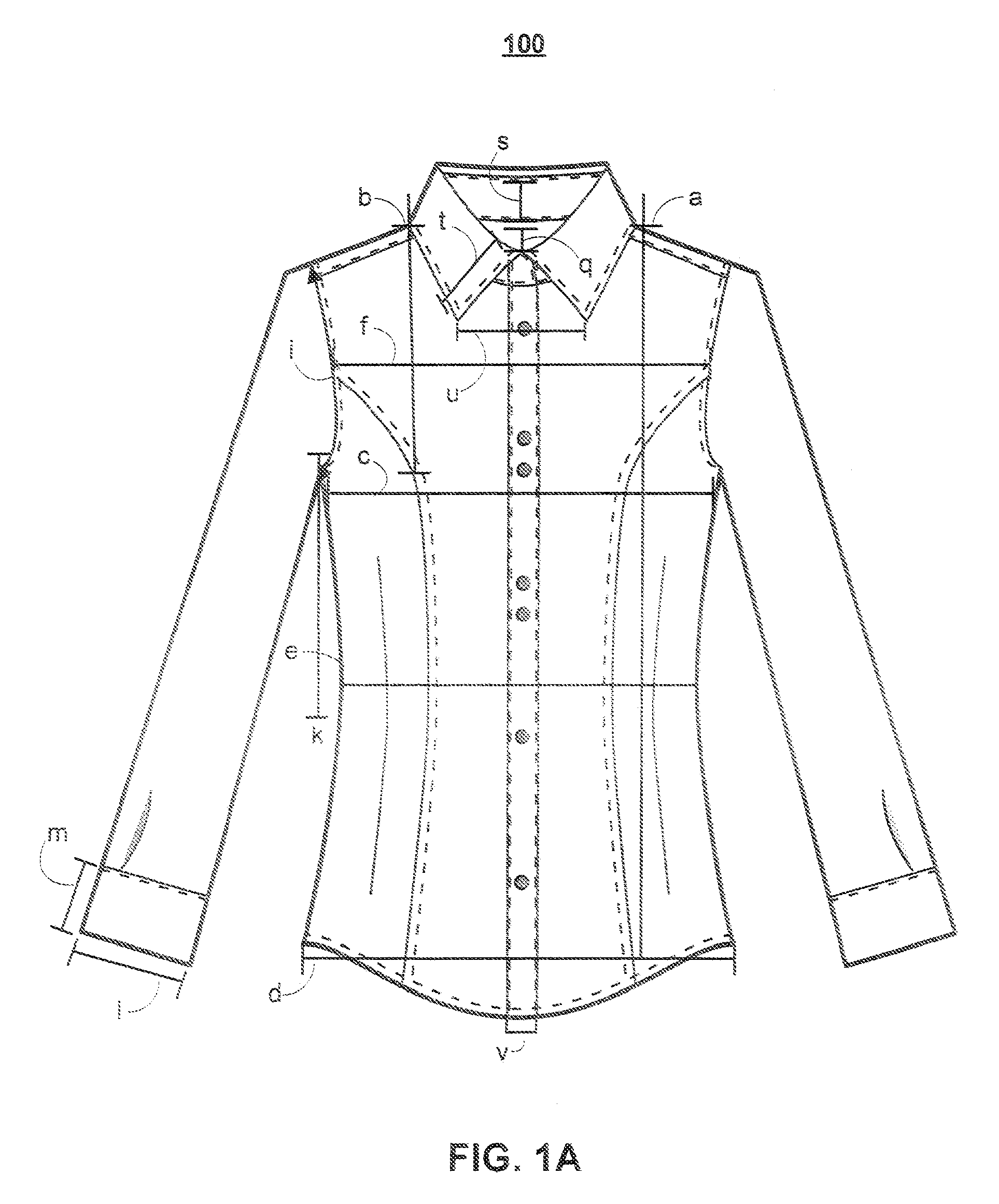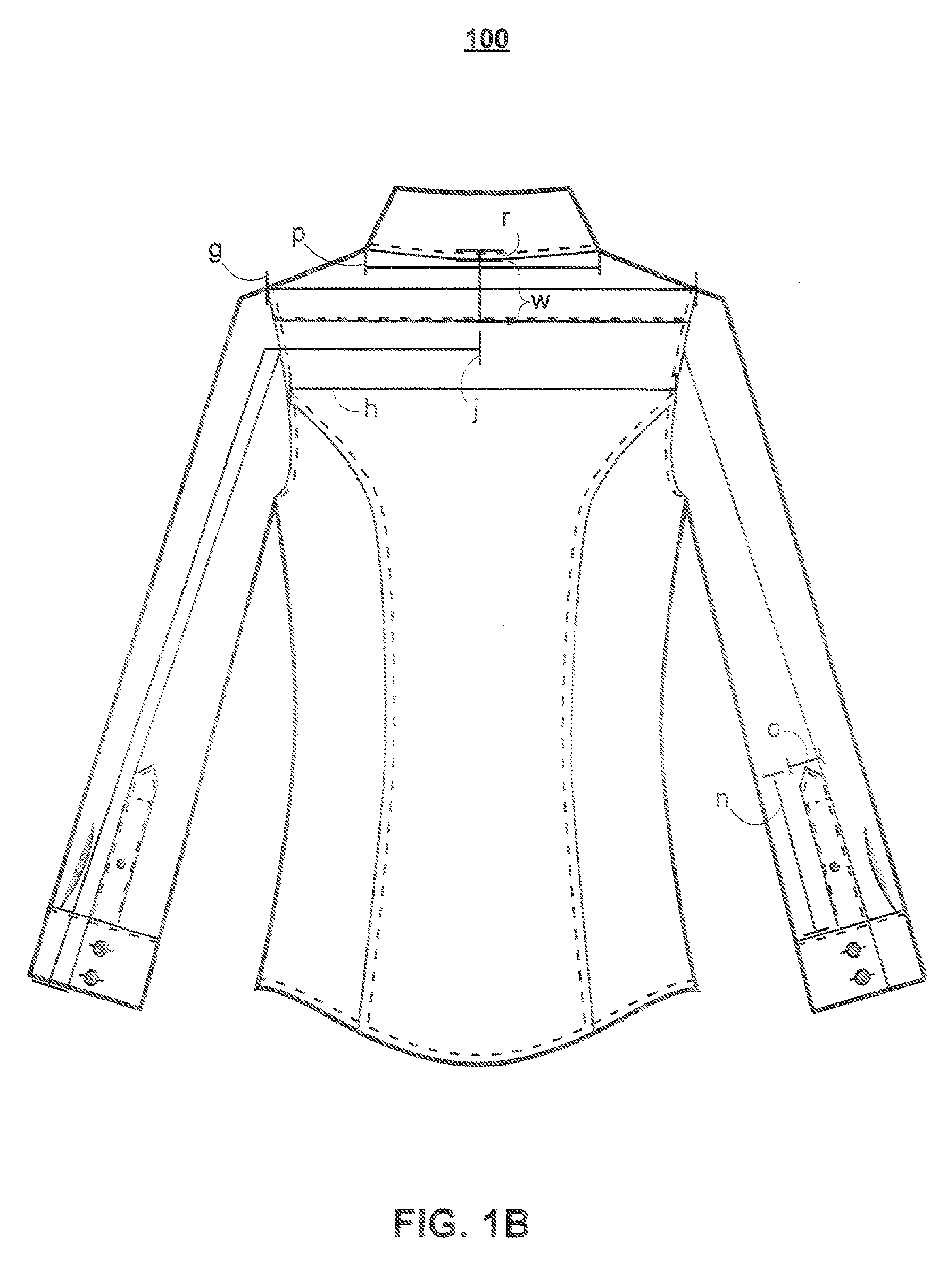Methods for optimally adjusting measurements of garments
a measurement method and technology for outer garments, applied in the direction of headwear, clothing making applications, hats, etc., can solve the problems of inability to fit individuals particularly well, laborious and expensive, and inconvenient method, etc., and achieve the effect of optimally adjusting the measurement of garments
- Summary
- Abstract
- Description
- Claims
- Application Information
AI Technical Summary
Benefits of technology
Problems solved by technology
Method used
Image
Examples
Embodiment Construction
[0061]As described above, the present invention improves the way that garments may fit variously-sized and variously-shaped wearers, by allowing some measurements to be adjusted based on a certain physical characteristic of a wearer, and by allowing some measurements to remain the same even if a certain physical characteristic of a wearer changes. This is achieved by designing a garment for a particular body type (such as slim build, athletic build etc.), in a particular style (such as Slim Fit or Relaxed Fit etc.) and in a certain size, and by adjusting some measurements of the garment to obtain the garment in a different size but for the same body type and in the same style. The measurements provide for a degree of conformance to the wearer's body, depending on the wearer's body type and the style of the garment.
[0062]A preferred embodiment of the present invention can be used to obtain different sizes of a garment depending on bra measurement, which includes a chest circumference...
PUM
 Login to View More
Login to View More Abstract
Description
Claims
Application Information
 Login to View More
Login to View More - R&D
- Intellectual Property
- Life Sciences
- Materials
- Tech Scout
- Unparalleled Data Quality
- Higher Quality Content
- 60% Fewer Hallucinations
Browse by: Latest US Patents, China's latest patents, Technical Efficacy Thesaurus, Application Domain, Technology Topic, Popular Technical Reports.
© 2025 PatSnap. All rights reserved.Legal|Privacy policy|Modern Slavery Act Transparency Statement|Sitemap|About US| Contact US: help@patsnap.com



